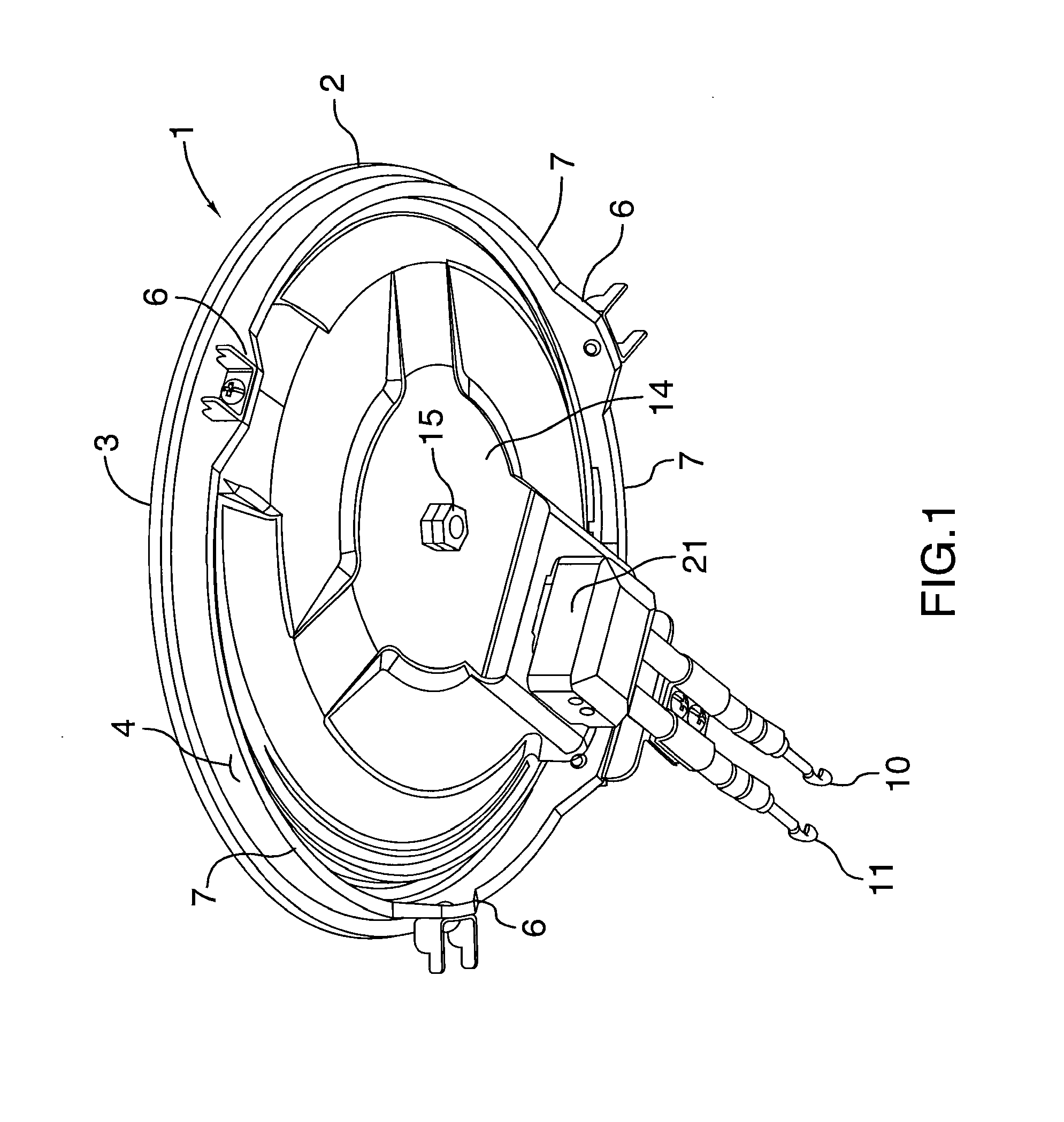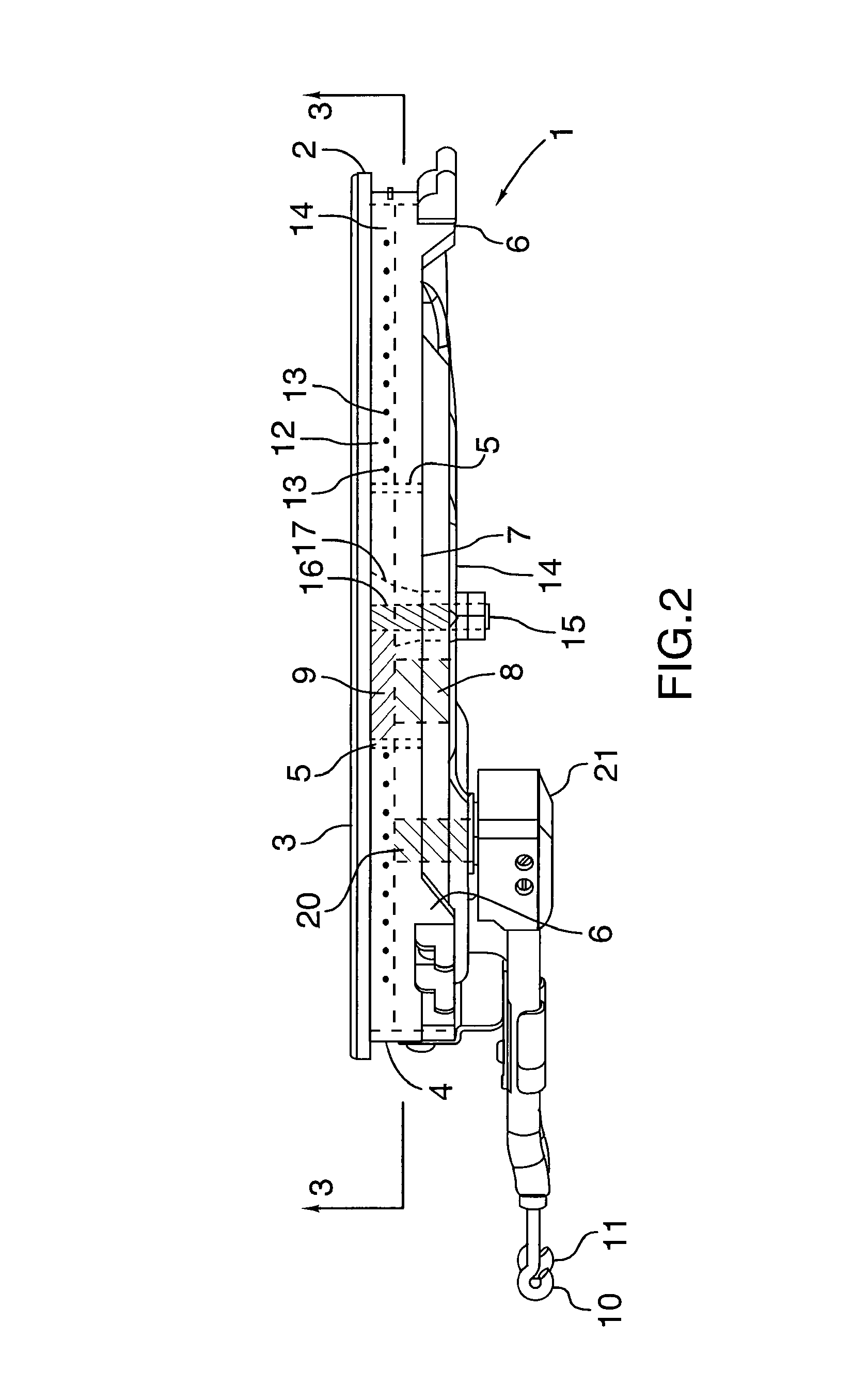Temperature controlled/limiting heating element for an electric cooking appliance
a technology of heating element and cooking element, which is applied in the direction of heating fuel, hot plate heating arrangement, lighting and heating apparatus, etc., can solve the problems of still occurring kitchen fires, reduce the risk of fire, speed up the cooking process, and quickly heat the pot and contents.
- Summary
- Abstract
- Description
- Claims
- Application Information
AI Technical Summary
Benefits of technology
Problems solved by technology
Method used
Image
Examples
Embodiment Construction
[0019]FIG. 1 shows the underside of a temperature controlled heating element 1 for an electrically powered cooking appliance such as an electric stove, hot plate or stove top. FIG. 2 shows a side view with internal components in ghost outline. The element 1 has a metal top plate 2 with an upper contact heating surface 3. The plate 2 serves to absorb heat from the electrical resistive heating wires and transfer heat through contact with a pot or pan that is placed on the upper contact heating surface 3.
[0020]As best seen in FIGS. 2-3, the plate 2 has an outer peripheral wall 4 and an inner wall 5. The plate 2, and walls 4-5 may be cast of metal formed from sintering a cast metal powder. The outer wall 4 has mounting tabs 6 (see FIGS. 1-2) for installing in a conventional recess of a stove. Between the mounting tabs 6 are hot air vent notches 7 to allow hot air to escape and vent from the stove.
[0021]As seen in FIGS. 2-3, the inner wall 5 of the plate 2 defines a central chamber in wh...
PUM
| Property | Measurement | Unit |
|---|---|---|
| temperature | aaaaa | aaaaa |
| temperature | aaaaa | aaaaa |
| temperature | aaaaa | aaaaa |
Abstract
Description
Claims
Application Information
 Login to View More
Login to View More - R&D
- Intellectual Property
- Life Sciences
- Materials
- Tech Scout
- Unparalleled Data Quality
- Higher Quality Content
- 60% Fewer Hallucinations
Browse by: Latest US Patents, China's latest patents, Technical Efficacy Thesaurus, Application Domain, Technology Topic, Popular Technical Reports.
© 2025 PatSnap. All rights reserved.Legal|Privacy policy|Modern Slavery Act Transparency Statement|Sitemap|About US| Contact US: help@patsnap.com



